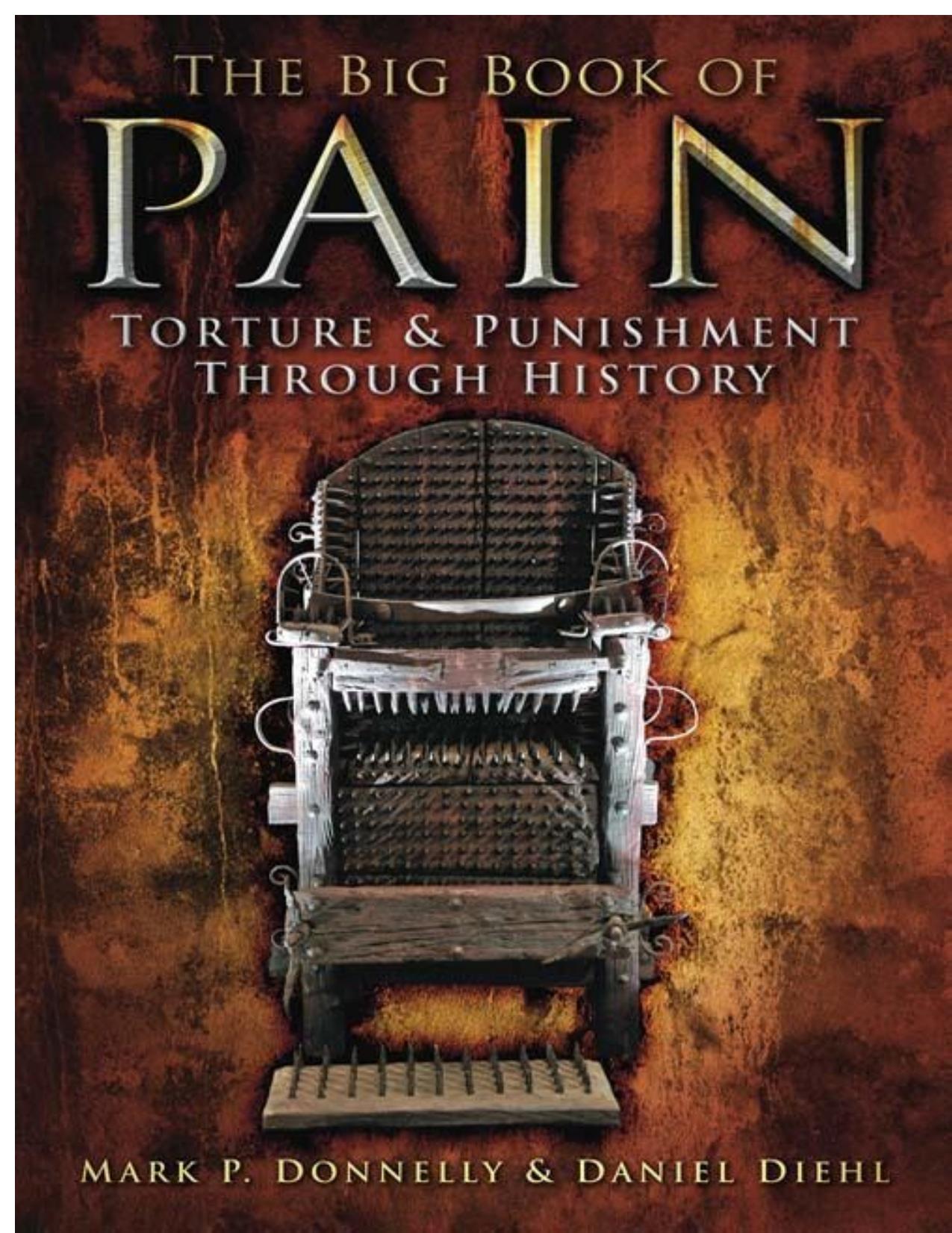The Big Book of Pain: Torture & Punishment through History by Donnelly Mark P & Diehl Daniel

Author:Donnelly, Mark P & Diehl, Daniel [Diehl, Daniel]
Language: eng
Format: epub, pdf
Publisher: Perseus Books Group
Published: 2012-01-30T23:00:00+00:00
This illustration by Howard Pyle shows the arrest of an old woman in Salem Massachusetts on the charges of witchcraft. It was the result of an hysteria which swept through the small community like the plague and left a legendary trail of destruction in its wake.
By the time the court convened, more than 100 people had been arrested and incarcerated on charges of witchcraft; among them were Sarah Good and her four-year-old daughter Dorcas. They were thrown into a tiny cell together and the young girl (Dorcas) was chained to a wall – possibly because she was small enough to slip between the narrow gaps between the bars of the cell.
Another was eighty-year-old John Proctor who had been arrested because he dared protest the entire proceeding; if he denied that the accused were witches he must also be a witch. Bravely, Proctor refused to enter any plea to the absurd charges and was sentenced to the gallows. Another man who refused to plea was Giles Corey. Corey refused to answer any plea – either guilty or not guilty. The prosecutors were determined to make him talk. So in an effort to force him to confess, Corey was pressed to death under an old door on which more and more stones were heaped. Periodically he would be asked whether he was ready to enter a plea, but with utter contempt, he merely replied ‘… more weight …’ And so more weight was added until Corey’s old ribs eventually shattered.
The trials dragged on from mid-June through most of September and before they were over, nineteen women and one man had been hanged, and four women had died in prison. Four-year-old Dorcas Good, whose mother had been hanged, went insane and never recovered. Two dogs were also hanged, having been convicted of being witches’ familiars.
The story of Salem is similar to those in Ellwangen, Germany and Essex, England with one notable exception. None of those accused of witchcraft, with the notable and tragic exception of Giles Corey, were tortured into making a confession. They were undoubtedly badly treated and poorly housed, but they were not beaten, pricked, starved, racked, or subjected to any of the other tortures previously associated with witch hunts in Great Britain and Europe. There was also a considerable, and immediate, backlash against what happened in Salem. Cotton Mather’s own father, Increase Mather, denounced the court in a pamphlet entitled ‘Cases of Conscience’, wherein he said: ‘It were better that ten suspected witches should escape than one innocent person should be condemned’. Massachusetts minister John Hale had a similar reaction. ‘It can not be imagined that in a place of so much knowledge, so many in so small [a] compass of land should abominably leap into the Devil’s lap at once.’ Thanks to the public outcry, the remaining women awaiting trial were released in January 1693 and by the middle of that month the General Court of Massachusetts ordered a day of fasting, prayer and soul-searching in memory of what had taken place at Salem.
Download
The Big Book of Pain: Torture & Punishment through History by Donnelly Mark P & Diehl Daniel.pdf
This site does not store any files on its server. We only index and link to content provided by other sites. Please contact the content providers to delete copyright contents if any and email us, we'll remove relevant links or contents immediately.
Cecilia; Or, Memoirs of an Heiress — Volume 1 by Fanny Burney(32384)
Cecilia; Or, Memoirs of an Heiress — Volume 3 by Fanny Burney(31758)
Cecilia; Or, Memoirs of an Heiress — Volume 2 by Fanny Burney(31725)
The Great Music City by Andrea Baker(31093)
We're Going to Need More Wine by Gabrielle Union(18911)
All the Missing Girls by Megan Miranda(15415)
Pimp by Iceberg Slim(14234)
Bombshells: Glamour Girls of a Lifetime by Sullivan Steve(13933)
Talking to Strangers by Malcolm Gladwell(13142)
Norse Mythology by Gaiman Neil(13140)
Fifty Shades Freed by E L James(13129)
For the Love of Europe by Rick Steves(12381)
Crazy Rich Asians by Kevin Kwan(9133)
Mindhunter: Inside the FBI's Elite Serial Crime Unit by John E. Douglas & Mark Olshaker(9113)
The Lost Art of Listening by Michael P. Nichols(7365)
Enlightenment Now: The Case for Reason, Science, Humanism, and Progress by Steven Pinker(7092)
The Four Agreements by Don Miguel Ruiz(6552)
Bad Blood by John Carreyrou(6483)
Weapons of Math Destruction by Cathy O'Neil(6090)
